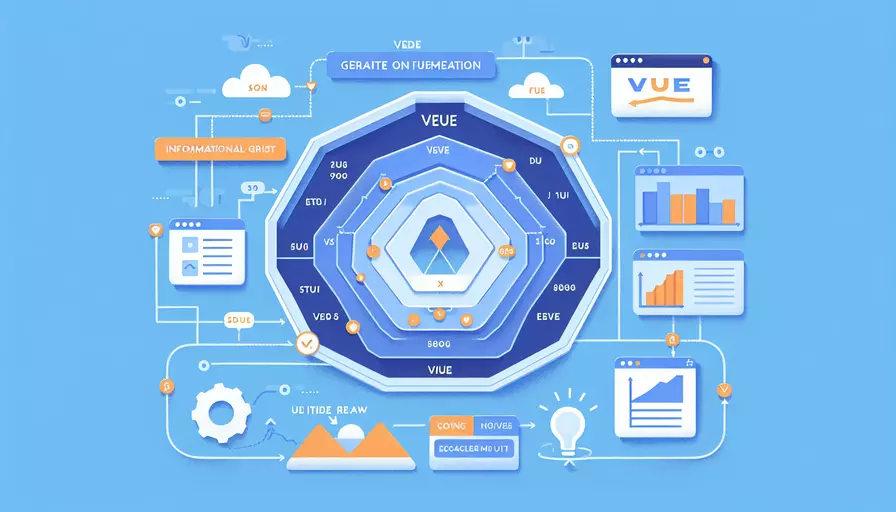
在Axios中获取Vue实例可以通过以下几种方法:1、使用Vue.prototype,2、在组件内部直接使用this,3、通过create方法创建Axios实例。这些方法可以帮助你在使用Axios进行HTTP请求时,更方便地访问和操作Vue实例的属性和方法。接下来,我们将详细介绍这些方法。
一、使用Vue.prototype
通过在Vue的原型上挂载Axios实例,你可以在任何组件中方便地使用Axios。这种方法适用于全局使用Axios的情况。
import Vue from 'vue';
import axios from 'axios';
Vue.prototype.$axios = axios;
然后在组件中使用:
export default {
name: 'MyComponent',
created() {
this.$axios.get('/api/data')
.then(response => {
console.log(response.data);
})
.catch(error => {
console.error(error);
});
}
};
二、在组件内部直接使用this
在Vue组件内部,你可以直接使用this来调用Axios。这种方法适用于你只需要在某个特定组件中使用Axios的情况。
import axios from 'axios';
export default {
name: 'MyComponent',
data() {
return {
info: null
};
},
created() {
axios.get('/api/data')
.then(response => {
this.info = response.data;
})
.catch(error => {
console.error(error);
});
}
};
三、通过create方法创建Axios实例
你可以使用Axios的create方法创建一个自定义的Axios实例,并在Vue组件中使用。这样,你可以为不同的Axios实例配置不同的默认参数。
import axios from 'axios';
const customAxios = axios.create({
baseURL: 'https://api.example.com',
timeout: 1000,
headers: {'X-Custom-Header': 'foobar'}
});
export default {
name: 'MyComponent',
data() {
return {
info: null
};
},
created() {
customAxios.get('/data')
.then(response => {
this.info = response.data;
})
.catch(error => {
console.error(error);
});
}
};
四、使用插件的方式封装Axios
如果你希望在整个应用中灵活且统一地使用Axios,可以考虑将其封装成Vue插件。
步骤如下:
- 创建一个插件文件,例如
axios-plugin.js:
import axios from 'axios';
const AxiosPlugin = {
install(Vue) {
Vue.prototype.$axios = axios.create({
baseURL: 'https://api.example.com',
timeout: 1000
});
}
};
export default AxiosPlugin;
- 在主入口文件中注册插件,例如
main.js:
import Vue from 'vue';
import AxiosPlugin from './axios-plugin';
Vue.use(AxiosPlugin);
- 在组件中使用:
export default {
name: 'MyComponent',
data() {
return {
info: null
};
},
created() {
this.$axios.get('/data')
.then(response => {
this.info = response.data;
})
.catch(error => {
console.error(error);
});
}
};
五、通过Vuex进行状态管理
你还可以使用Vuex进行状态管理,通过在Vuex actions中进行Axios请求,将数据存储在Vuex的store中,然后在组件中访问这些数据。这种方法适用于需要在多个组件之间共享数据的情况。
步骤如下:
- 在
store.js中定义一个action:
import axios from 'axios';
const store = new Vuex.Store({
state: {
info: null
},
mutations: {
setInfo(state, info) {
state.info = info;
}
},
actions: {
fetchInfo({ commit }) {
axios.get('/api/data')
.then(response => {
commit('setInfo', response.data);
})
.catch(error => {
console.error(error);
});
}
}
});
export default store;
- 在组件中分发action:
export default {
name: 'MyComponent',
computed: {
info() {
return this.$store.state.info;
}
},
created() {
this.$store.dispatch('fetchInfo');
}
};
六、使用环境变量配置Axios
在大型项目中,管理API的baseURL和其他配置项时,可以使用环境变量。这样可以根据不同的环境(开发、测试、生产)来配置Axios。
- 在项目根目录下创建一个
.env文件:
VUE_APP_API_BASE_URL=https://api.example.com
- 在
main.js中配置Axios:
import Vue from 'vue';
import axios from 'axios';
axios.defaults.baseURL = process.env.VUE_APP_API_BASE_URL;
Vue.prototype.$axios = axios;
- 在组件中使用:
export default {
name: 'MyComponent',
data() {
return {
info: null
};
},
created() {
this.$axios.get('/data')
.then(response => {
this.info = response.data;
})
.catch(error => {
console.error(error);
});
}
};
总结
获取Vue实例中的Axios有多种方法,如通过Vue.prototype全局挂载Axios实例、在组件内部直接使用this、通过create方法创建Axios实例、使用插件方式封装Axios、通过Vuex进行状态管理,以及使用环境变量配置Axios。每种方法都有其适用的场景,选择合适的方法可以提高项目的可维护性和开发效率。
进一步的建议包括:
- 根据项目规模和复杂度选择合适的Axios集成方法。
- 在实际开发中,考虑使用环境变量来配置Axios,以便在不同环境中灵活切换。
- 对于需要共享状态的数据,优先考虑通过Vuex进行管理。
- 编写并维护好Axios请求的错误处理逻辑,以提高应用的健壮性。
相关问答FAQs:
1. 如何在Vue中使用axios?
要在Vue中使用axios,首先需要安装axios库。可以通过以下命令使用npm进行安装:
npm install axios
安装完成后,在Vue的组件中引入axios,并将其添加到Vue的原型链上,以便在整个应用程序中都可以访问axios。可以在main.js文件中执行以下代码:
import axios from 'axios';
Vue.prototype.$http = axios;
这样就可以在Vue组件中使用this.$http来发起HTTP请求了。
2. 如何发送GET请求获取数据?
要发送GET请求并获取数据,可以使用axios的get方法。可以在Vue组件的方法中使用以下代码:
this.$http.get('/api/data')
.then(response => {
// 请求成功时的处理逻辑
console.log(response.data);
})
.catch(error => {
// 请求失败时的处理逻辑
console.error(error);
});
在上述代码中,/api/data是请求的URL,可以根据实际情况进行修改。then方法用于处理请求成功的响应,catch方法用于处理请求失败的情况。
3. 如何发送POST请求提交表单数据?
要发送POST请求并提交表单数据,可以使用axios的post方法。可以在Vue组件的方法中使用以下代码:
this.$http.post('/api/submit', { name: 'John', age: 25 })
.then(response => {
// 请求成功时的处理逻辑
console.log(response.data);
})
.catch(error => {
// 请求失败时的处理逻辑
console.error(error);
});
在上述代码中,/api/submit是请求的URL,{ name: 'John', age: 25 }是要提交的表单数据,可以根据实际情况进行修改。同样,then方法用于处理请求成功的响应,catch方法用于处理请求失败的情况。
这些是使用axios获取Vue中的数据的基本方法。根据实际需求,还可以使用axios的其他方法来处理不同类型的请求,如PUT、DELETE等。同时,axios还提供了拦截器、请求和响应的配置等功能,可以根据具体情况进行进一步的学习和使用。
文章标题:axios里面如何获取vue,发布者:worktile,转载请注明出处:https://worktile.com/kb/p/3644253

 微信扫一扫
微信扫一扫  支付宝扫一扫
支付宝扫一扫 